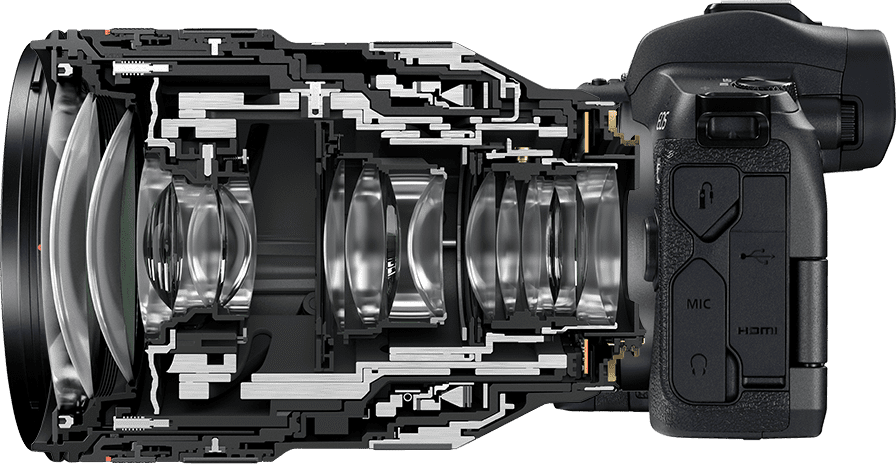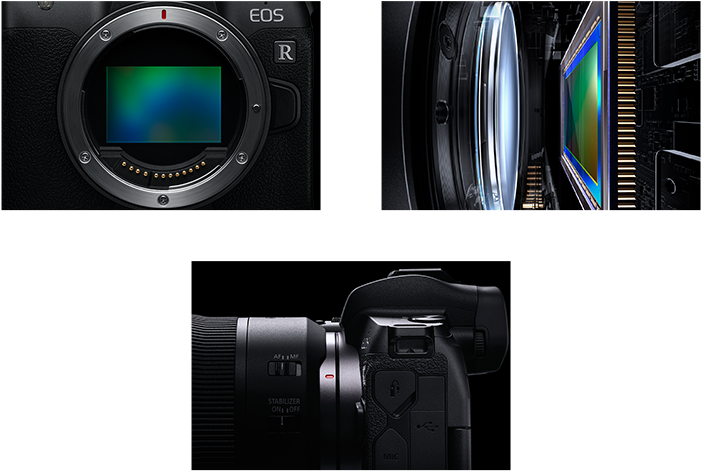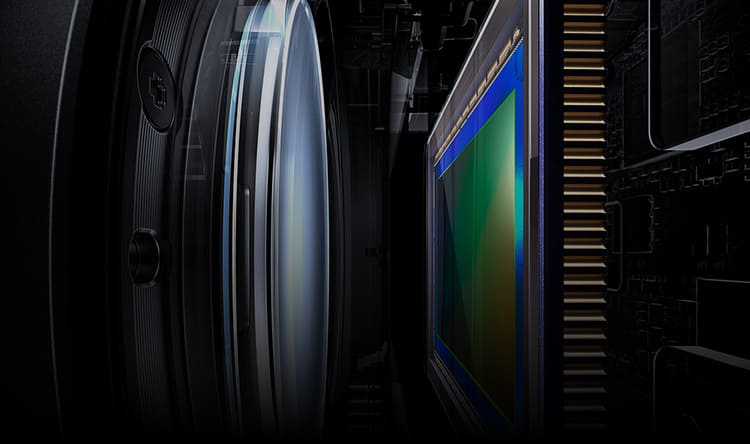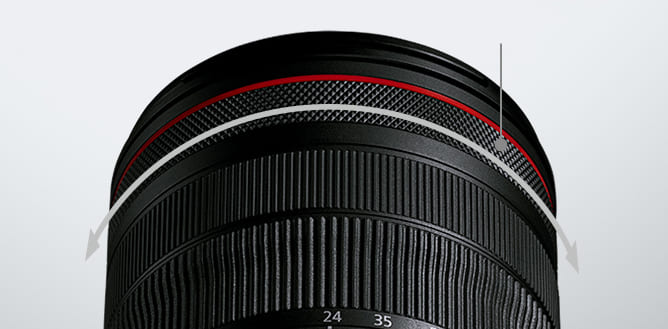Optical designs once believed to be impossible are now realized in each and every lens.
A new control ring has been added, to help RF lenses advance into a new era of high-quality imaging.

RF28-70mm F2 L USM
Unprecedented image quality
— Large aperture mount
with short back focus
The RF-mount system employs the same large 54mm aperture used in the EF mount, though the camera itself is smaller. The new design also features a short back focus. The CMOS sensor is placed very close to the rearmost lens, increasing the degree of freedom in optical design. This new mount design enabled the development of the RF28-70mm F2 L USM zoom lens with a maximum aperture of f/2, as well as the RF50mm F1.2 L USM, which provides extremely sharp focus at the widest aperture. These features could not have been matched, in practical terms, using the EF mount design.

 Large aperture mount Short back focus New communication system
Large aperture mount Short back focus New communication system 




![Built-in Digital Lens Optimizer[Optical compensation achieved immediately after shooting]](/dam/RF-Lens-World/img/features/img04.jpg)
![Built-in Digital Lens Optimizer[Optical compensation achieved immediately after shooting]](/dam/RF-Lens-World/img/features/img04-sp.jpg)
